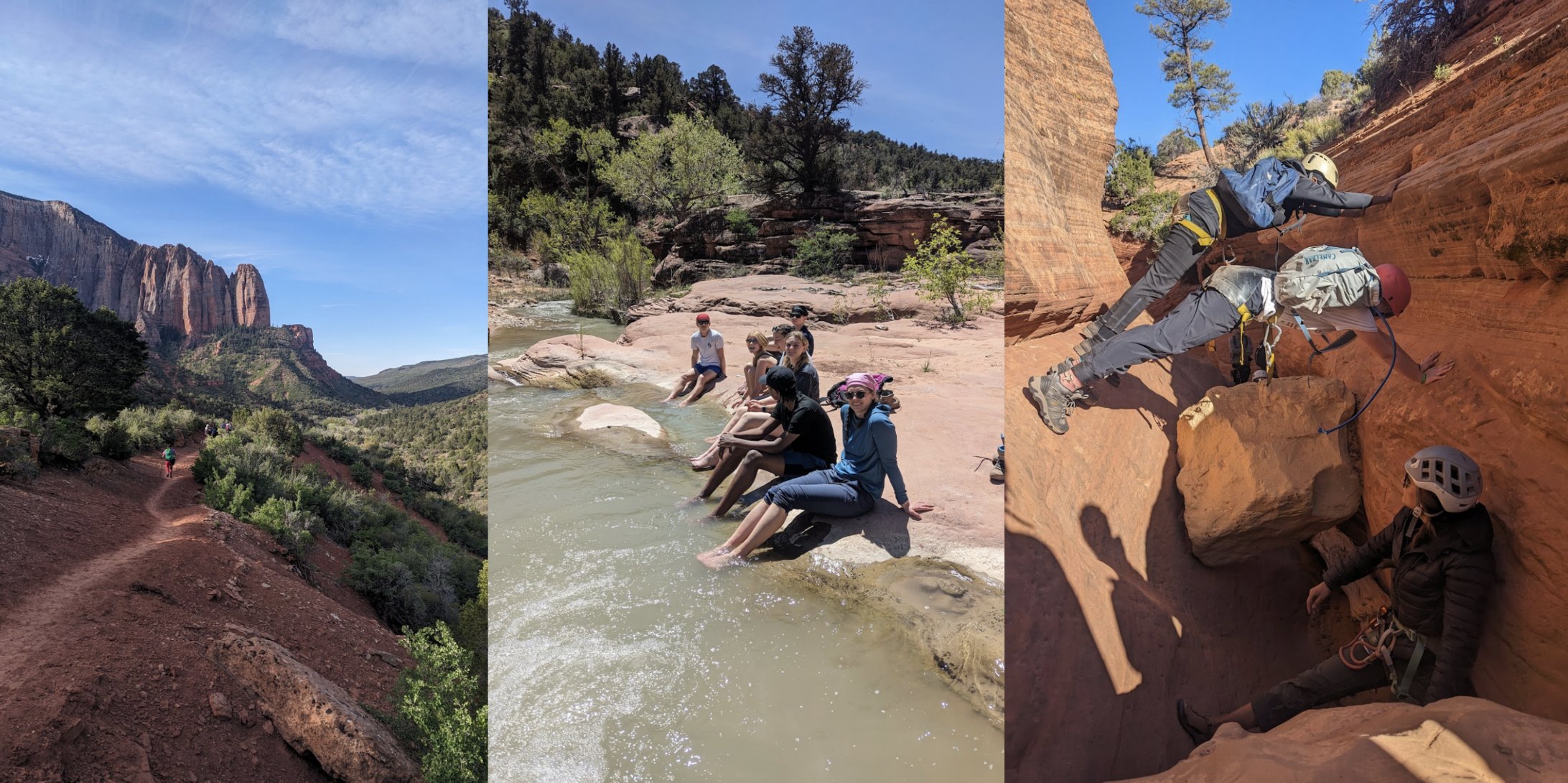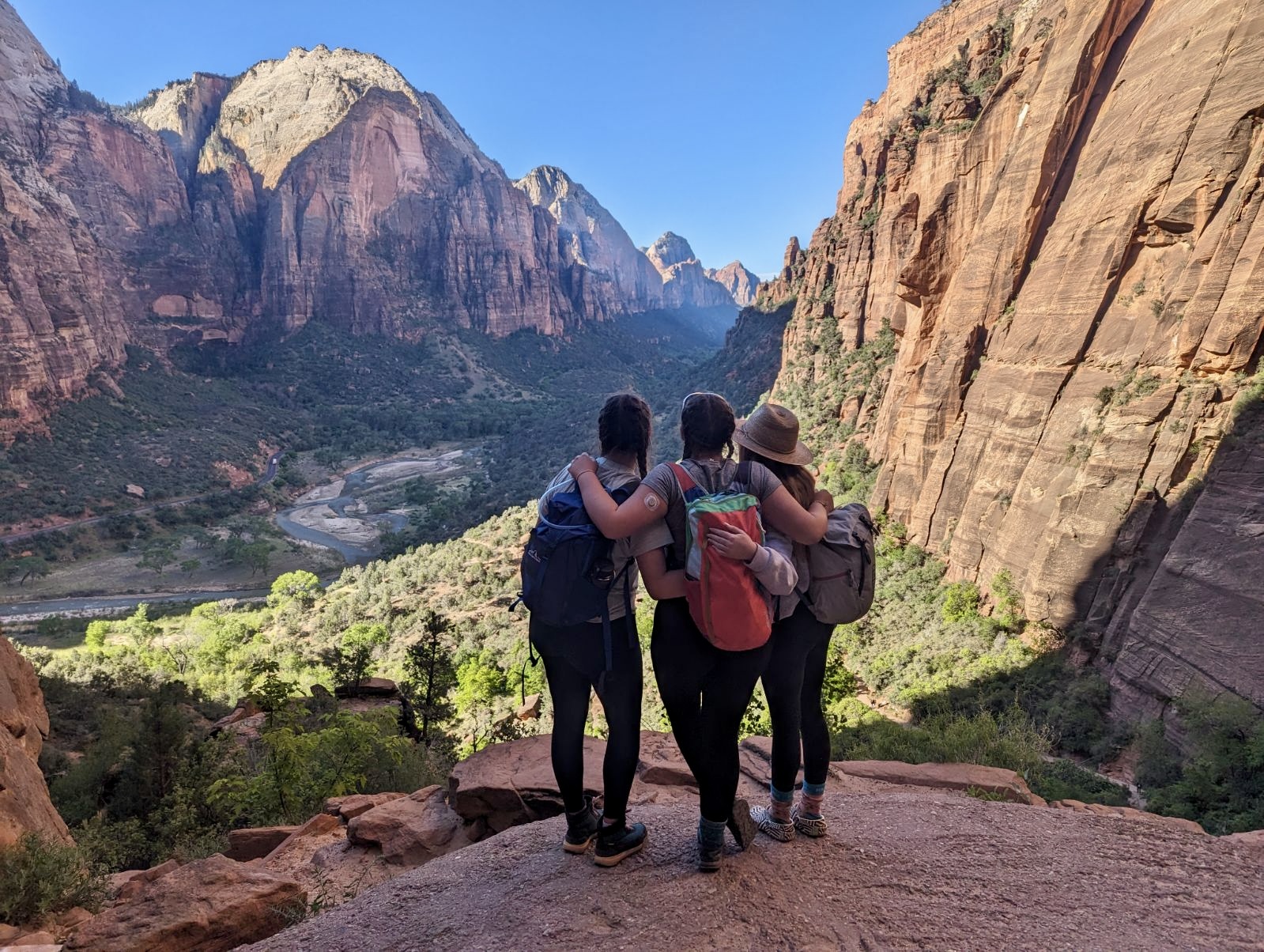.png?command_1=resize&width_1=220)
The following article was written by Brett Lofgren, MYP English Teacher.
There’s a theory in mathematics instruction, sometimes called The Singapore Method, in which students go from enactive to iconic to symbolic learning. The first stage involves a concrete understanding of something–say, counting apples and oranges–before students move on to using their fingers and finally little squiggles on a page we call numbers. This process can be replicated for a wide variety of mathematical concepts, especially in areas like geometry and statistics. The language and literature or humanities teacher in me has always wondered if this concept could be applied to learning in other schools of thought. For example, does someone need to see a firetruck rushing to help someone before they understand the purpose of taxes and democracy? In many ways, when teachers and researchers use the word “experiential learning” they’re referring to the hands-on, real-world experiences we all need as a foundation for understanding more complex and theoretical concepts.
While I have yet to come across any research about The Singapore Method in English classes, I can confidently say that this year’s grade 10 class learned some valuable lessons from physically visiting nature. While there are loads of articles written about the positive mental health and physical fitness benefits of hiking and exploring the outdoors, I want to focus on some of the academic skills we learned on this trip and how the concrete nature of experiencing these outside the classroom had a profound impact on what happened academically when we returned.
In May of 2024, 28 students and 6 teachers hopped into a four-vehicle caravan and drove 10 hours to one of the most beautiful places on Earth: Zion National Park. We camped there for four nights, grouped into three different expeditions that would alternatively go hiking, canyoneering, and exploring each day. We encountered blooming Prickly Pear Cacti, reintroduced California Condor, stratified canyon walls, and took cold plunges in the Virgin River near our campsite. In preparation for the trip, the teaching staff created something we called the Zionosphere. This was an attempt to make a cross-section of the national park and assign different strata for students to investigate along the way. Students were grouped into a variety of elevations above and below our base camp at 4,000 feet. Students investigated what was happening below the surface we stood on, what was happening to the flora, fauna, human-historical and human-sustainable parts of the valley floor, then what was happening 50 meters above us, to the top of the highest point in the park, in the atmosphere and in the swath of visible space above us. Yes, we asked students to research these before we went to the park, but only briefly– mainly to acquire some vocabulary.
As students continued their journey through the park and investigated what was happening, we had hundreds of small “learning moments.” Students came to answer the following questions: what was happening in the atmosphere that led to snow as we passed through Salt Lake City and blue skies when we reached the park? How was the visitor center modeling sustainability by cooling itself with less electricity? Why was the water so cold? Why were the canyon tops flat? Why did indigenous Americans avoid the canyon? Why did sandstone erode so easily? Numerous academic classes can and do cover the same things we learned in our investigation; a well-edited, 15-minute YouTube video probably could have covered everything we learned on our trip but it wouldn’t have had the same emotional impact. Tell any young child that there are three apples and two oranges in front of them, so we have five pieces of fruit and you’ll see how young brains quickly grasp the concrete and struggle to make meaning of the symbolic. The same goes for teenagers learning about rocks. They can read articles about geology all day, but few things get them interested in Earth’s processes like looking down at a river that carved the thousand-foot cliffs they stood upon.

Similarly, there are a multitude of lessons adults try to teach young people through symbolic means that don’t register until they experience concrete and natural repercussions. For example, students sometimes complain that I’m a “harsh grader” and I frequently retort that “I’m an accurate one.” I’ve taught over a thousand students in my career thus far and I’ve seen what it takes to get into a variety of top-tier colleges and universities. So when I tell a student that the work they produced earns a middling score, they sometimes don’t believe me. Even students that see their mistakes and try their hardest to fix them, struggle to understand exactly what success looks like. In many ways, teaching is a simple setup; you tell students how high the bar is and then you help them figure out how to jump over it. However, that “bar” is often a symbolic concept, one they can’t quite mentally understand, and I need to communicate it in a multitude of ways. One such way came about on a 15-mile hike through the deserts of Southern Utah. The teaching staff told students over and over that they needed to bring 3-4 liters of water on the hike, wear sun protection, and key in on their nutritional intake of salt, electrolytes, carbohydrates, and more. Even though we told students exactly what it took to succeed, many of them did not bring enough water. It took my group 9.5 hours to complete the 15-mile hike and I had to give away my 3rd liter of water to students experiencing the early symptoms of heat exhaustion.
By experiencing the physical environment of Zion and the concrete lessons nature teaches us, the grade 10 class came back to campus more prepared for finals. Not only did they gain some perspective on the comforts of home, but they learned the lessons we try to teach them more deeply. Rather than just parroting back answers about how rocks have varying scores on the Mohs Hardness Scale, students can now recall how the canyon walls broke into clumps of sand on our canyoneering experience, unlike the granite we typically see in Idaho. Conversely, the symbolic lessons we teach students now have more meaning after they experience the physical hardships of the trip. I watched students try to process their nerves as they prepared to rappel from a 40-foot cliff into a slot canyon and I thought about all the advice anxious students are given. So frequently we say an assortment of positive phrases, maxims, and idioms to try and help students stay calm during finals week and fail to make an impact. However, it’s much more effective to talk to them in more concrete settings. For example, I quoted a phrase I saw on Instagram to one particularly nervous student who was proud that she completed the rappel: “I’m sorry I was so anxious, I didn’t know everything would be alright.” We both laughed about how accurate that phrase was and that she needs to remember that when things get tough. She retorted with a phrase of her own, “I don’t actually hate this, I was just nervous.” I’ve heard a few pieces of wisdom that summarize life, and the life of 21st century students, so succinctly: she was now able to symbolically describe the enactive experience of overcoming a challenge. It is clearer to me now more than ever that Riverstone’s outdoor trips are essential to improving learning in the classroom.






















.png)